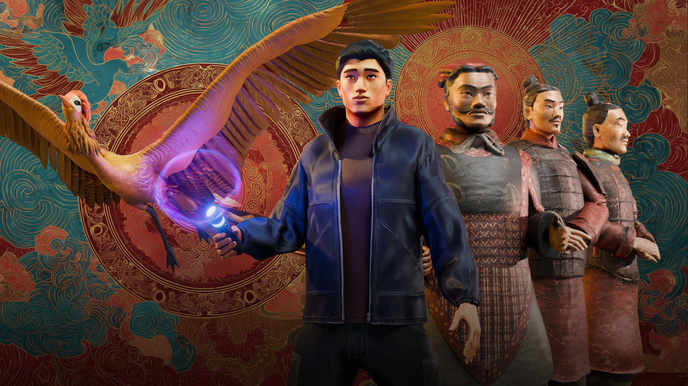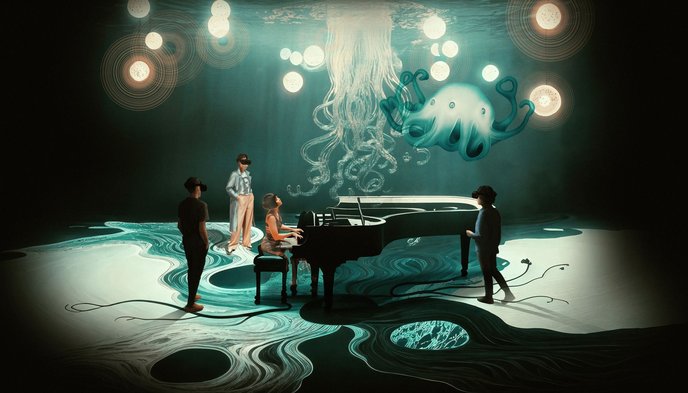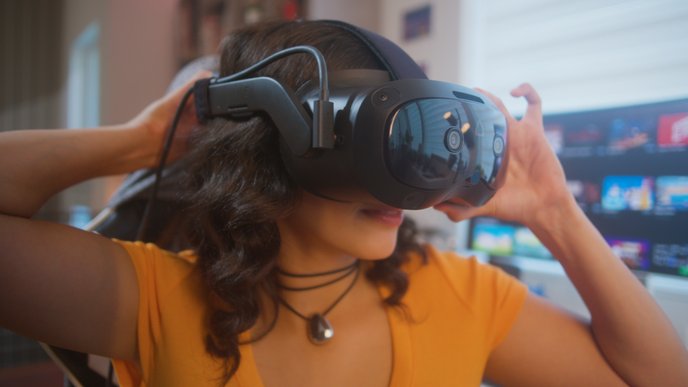Gargoyle Doyle: An Immersive VR Buddy Comedy of 800 Years Going Nowhere
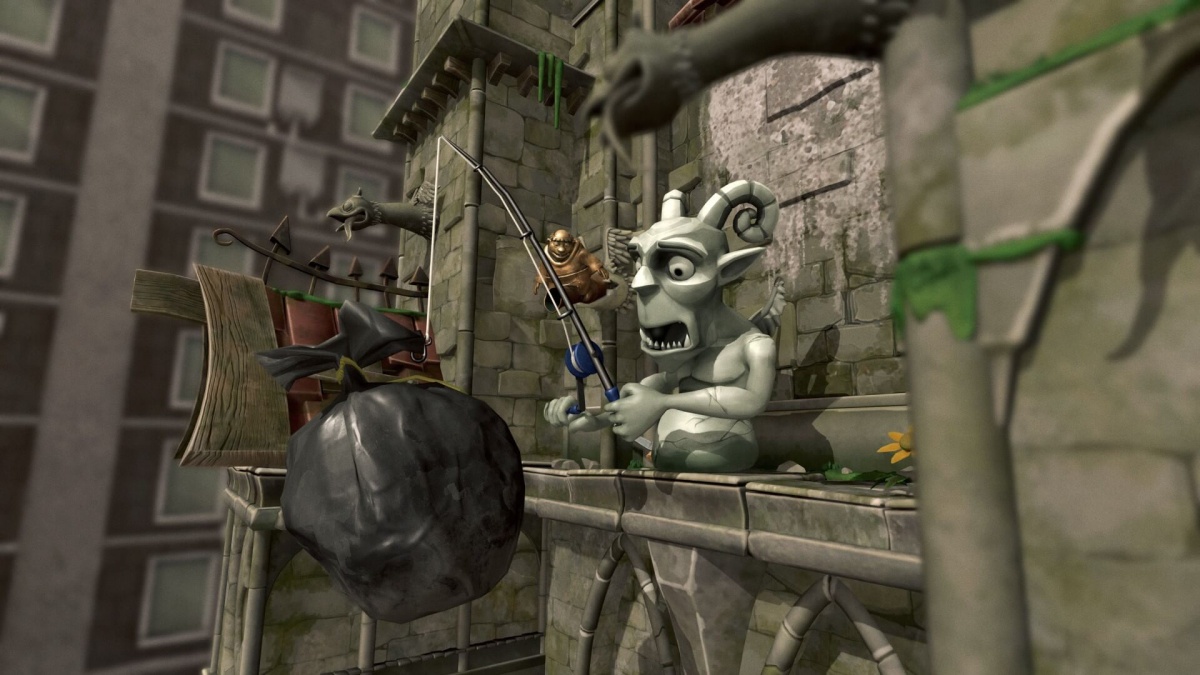
Extended Reality
7-minute read
In life, there are always certain things you want to keep to yourself. It's not necessarily a selfish desire to hide a "hidden gem" from becoming too popular. Perhaps you've always felt that it requires a certain level of appreciation, and even explaining it might not do justice to its brilliance. It’s a protective instinct, fearing that it might be spoiled.
Yes, I'm talking about "Gargoyle Doyle." At the recent XR DREAMLAND, Asia's most representative immersive film exhibition, invited by the Kaohsiung Film Festival, I encountered one of my personal favorite films—a VR buddy comedy that spans eight hundred years, blending elements of historical fiction with humor.
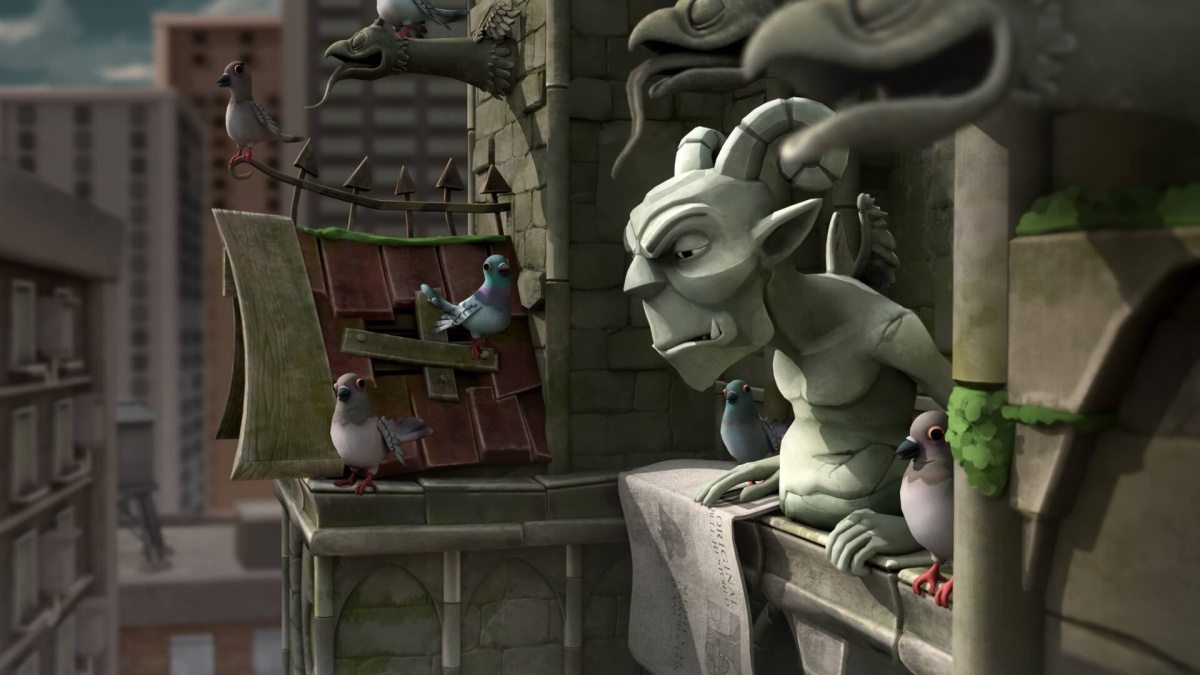 It's a story about a stuck gargoyle named Doyle. (Source: KFF)
It's a story about a stuck gargoyle named Doyle. (Source: KFF)
Perhaps We Need More VR Comedies
Comedy combined with immersive storytelling is not unprecedented, but it is still relatively uncommon. After greeting director Ethan Shaftel and waiting for him to settle in with a sip of water, I eagerly asked him about this. Ethan smiled and responded, "What surprises me is that there isn't more comedy in VR."
He admitted that working with new technology is challenging, saying, "Sometimes there are obstacles in connecting with the audience," especially since VR headsets can be quite cumbersome to use.
Ethan reflected, "I see some wonderful, beautiful pieces where the content is challenging, the form is challenging, and the technology is challenging. It’s like challenge after challenge, and I think that might be a mistake—not for the individual piece, but maybe for the medium itself if we want to gather an audience and make it sustainable." As a lover of comedy, he believes that it should play a role in enhancing the medium, potentially attracting more viewers and helping immersive works to thrive.
As the title "Gargoyle Doyle" suggests, the story revolves around a gargoyle named Doyle. Gamers are familiar with the concept of fantastical creatures. Initially, gargoyles served as rain spouts on medieval Gothic cathedrals, hence often referred to as 'water spouts.' However, some gargoyles were not functional but stood high on churches to ward off heretics, the most famous being the 'Vampire' (Le Stryge) at Notre Dame. We've discussed this in "Eternal Notre-Dame," making a VR comedy featuring a gargoyle both familiar and intriguing.
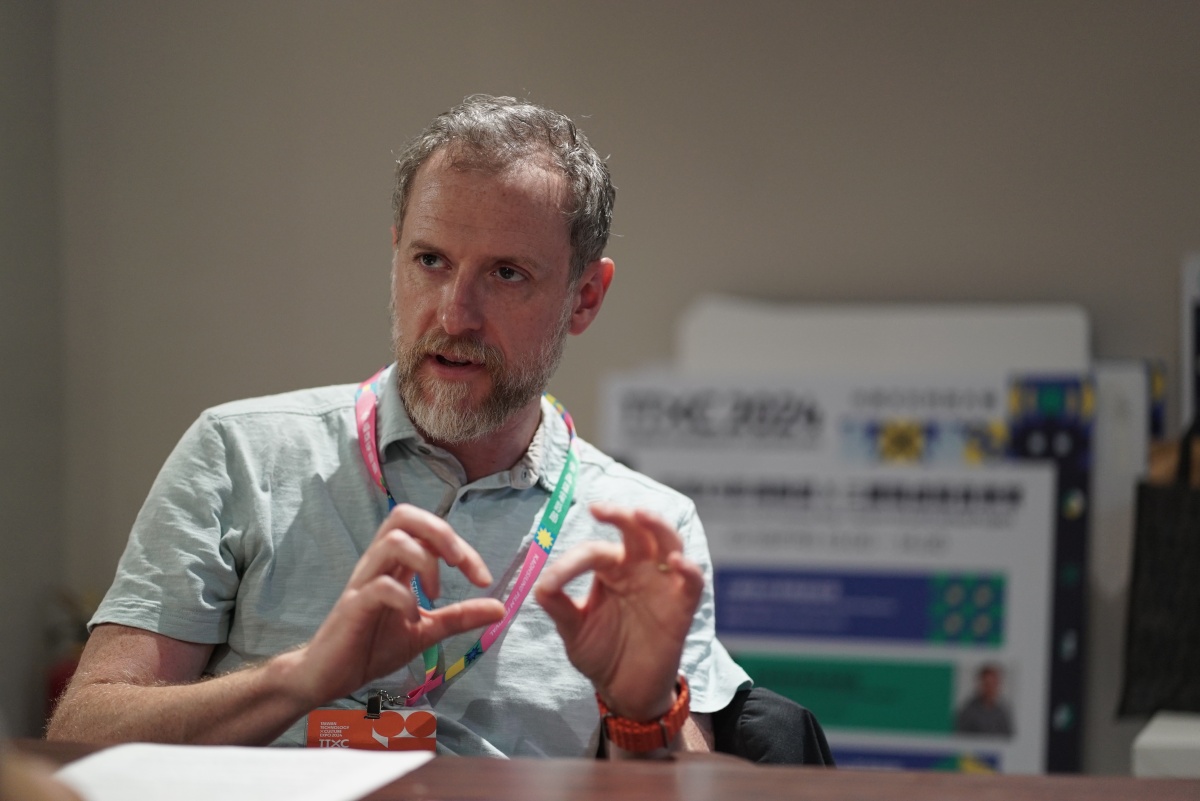 Ethan Shaftel, Director of "Gargoyle Doyle."
Ethan Shaftel, Director of "Gargoyle Doyle."
Ethan explained that his inspiration starts with the title. "I have a list of titles—about a thousand," he said, half-jokingly (or perhaps he is serious). "The first idea came with the title, 'Gargoyle Doyle.' I thought, 'Who is this character?' Doyle, in English, is an old-fashioned name, a grumpy name." After a year of pondering, Ethan realized that most cinematic gargoyles could fly or at least move freely; hardly any were depicted as trapped.
"Okay, that’s interesting. So why would this gargoyle be grumpy? Maybe he’s in the wrong place. Maybe he had a vision of his life, but it didn’t go that way. He ended up in the worst alcove of the cathedral, surrounded by people he doesn’t even like. No wonder Doyle is in a bad mood. It's the 'A-ha Moment' of Gargoyle Doyle."
Being stuck in the past or focused solely on the present doesn’t provide a complete worldview
Time rewinds eight hundred years to when medieval stonemasons were building this magnificent Gothic cathedral. Doyle was a gargoyle crafted from the finest stone, ready to be installed in front of a colorful rose window. Unfortunately, an accident broke Doyle's wings. Thus, from the most prominent position in the cathedral, the craftsmen carelessly placed him in a poorly lit side alcove, forcing him to spend eight hundred years with pigeons defecating on his head, bird drain spouts, and a noisy bronze statue of a water spout named Chet.
 The front of the cathedral, where Doyle was supposed to be positioned in front of the rose window. (Source: KFF)
The front of the cathedral, where Doyle was supposed to be positioned in front of the rose window. (Source: KFF)
Ethan's comedic story draws parallels to Kevin Smith's Clerks. Set in New Jersey, it follows Dante, a convenience store clerk, and his neighbor Randal, who works at a video rental store. In their twenties, they spend their days discussing their ambitions and future plans. A decade later, in the sequel, as they approach their forties, they find themselves still stuck in New Jersey. After the convenience store burns down, they take jobs at a fast-food restaurant, yet their conversations still revolve around their unfulfilled dreams.
Dante and Randal share a brotherly bond rooted in their sense of being trapped, much like the relationship between Doyle and Chet.
Influenced by comedy films, Ethan was pleased with my comparison and continued to explain the dynamic between Doyle and Chet. "The ideal is that you have opposites, but it’s not just any opposites. It’s a unique difference where one character lacks something, and the other character has it. That’s the structure of a buddy comedy. Clerks is brilliant, and some of the best comedies follow that same structure with two opposites."
Clearly, Doyle is the pessimistic protagonist who feels his potential was wasted. So how does one logically place Chet in the position of an optimist? The answer lies in time. "Doyle is stuck in the past. He’s burdened by the past and misses everything in the present because his mind is always on what should have been. A good counterpoint to that is someone who lives entirely in the present, and that’s Chet. He’s just doing whatever he can in the moment—whether it’s fishing for trash or enjoying the sunrise every day. He finds joy in the simple things."
 Beside Doyle, the golden bronze water spout is Chet, with whom he shares the pastime of fishing for trash. (Source: KFF)
Beside Doyle, the golden bronze water spout is Chet, with whom he shares the pastime of fishing for trash. (Source: KFF)
One is stuck in the past while the other lives in the present, inevitably leading to a clash. This dynamic seems to set the stage for the story to unfold in a way that "ultimately, the optimistic Chet convinces the pessimistic Doyle to forget the past and start anew today." But Ethan thinks this is not enough. A buddy comedy must include not only the "thesis" and "antithesis" but also the "synthesis" to be considered complete.
"It wasn’t until later that I realized Chet was the cause of Doyle’s accident. That’s when it became a real story—because it’s not just Doyle who has a flaw; Chet does too. Living in the present is also an incomplete worldview." The truth is revealed: Chet was originally a bell clapper, and his fall from the bell tower broke Doyle's wings. He was bent into a drainpipe by the craftsmen and stuck in an inconspicuous corner of the cathedral with Doyle, hiding his secret for eight hundred years out of fear of being scolded.
Eight Hundred Years of Buddy Comedy for the Underdogs
So, how does history play into this? Although Doyle and Chet are losers who can't go anywhere, they have lived through eight hundred years and seen a lot. "Yeah. The purpose of the vignettes showing human history is to illustrate something Doyle considers a failure, but Chet sees them as successes." In the corner of the cathedral, Doyle and Chet, always observing humanity from a distance, witnessed three pivotal moments in French history—the Black Death, the French Revolution, and World War I.
The first is the Black Death. Ethan narrated, "Doyle’s point is, 'Look at them. They’re idiots. They don’t realize they’re spreading germs. They gather together, cough in each other’s faces, and pray for deliverance, making it worse.' To Doyle, it’s a simple failure—just another example of humanity’s mistakes. Chet’s perspective, though, is more optimistic. He says, 'They didn’t know about germs, but they still tried something. You don’t know if it will work, but you have to try anyway.' For Chet, it’s about not giving up, even if it’s imperfect."
The second is the French Revolution. "Doyle points out, 'Look at them—they ran out of royal heads to chop, so they started killing each other.' To him, it’s another failure—people killing each other for change, but they didn’t succeed in changing anything. Was the effort worth the cost? Chet’s view is, 'Yes, it didn’t work, but they stood up for something. They had a vision, and they tried.'"
The last is World War I. Ethan continued, "Doyle’s view is, 'Look at them. They invent better ways to kill each other—machine guns, mustard gas, airplanes. They’re just more effective at destruction.' And he’s not wrong. Chet’s point, though, is, 'Yes, it’s a double-edged sword. They invented poison gas, but they also created medicine. These are all attempts to improve their lives, even when it leads to something destructive.'"

 The beginning and end of the cathedral. Ultimately, this fictional cathedral was demolished due to urban development. (Source: KFF)
The beginning and end of the cathedral. Ultimately, this fictional cathedral was demolished due to urban development. (Source: KFF)
Hearing this, I couldn't help but ask, "What do you think of yourself? Are you more like Doyle or Chet?"
"Definitely Doyle. Yeah, no question," Ethan answered without hesitation. Then he shifted the conversation, seemingly wanting to delve deeper, more directly into the core of the work:
"The message behind this is, 'Why bother? Why even try?' So, what’s the lesson we take from that? If we focus only on our failures, we might as well give up. We’ll probably mess it up. But if we see the positives, even in failure, we can acknowledge, 'At least they tried. They had principles and were trying to improve their lives.' That mindset helps us face existential problems by saying, 'We’ll make mistakes, but we won’t ignore the problem. We’ll focus on it and do our best.'"
Yes, Ethan, who sees himself as grumpy and stubborn, much like Doyle, still ends on a warm note—both in the interview and in his work.
In the ending of Gargoyle Doyle, the cathedral is inevitably demolished, but all the precious relics—including the fatefully mismatched Doyle and Chet—are carefully preserved in a museum's exhibition room, fulfilling their destiny and sharing through mixed reality with us in the future, allowing people to experience this—fictional past, once existed beauty—in their familiar space and time.
Spanning eight hundred years, Gargoyle Doyle ultimately reflects the shadows and brilliance of human nature, like the dual nature of Doyle and Chet. Ah, what a fulfilling ending.
